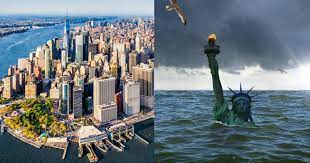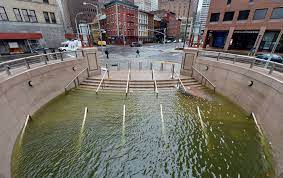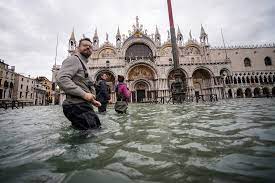It is not a drill; New York City is actually sinking. As per a recently published scientific report, the financial center of the United States is sinking. This is because of the city’s 1,48 trillion pounds worth of skyscrapers.
The study found that New York falls beneath the weight of the buildings by two to four millimeters a year, “with some areas subsiding much faster.”
Why is New York City sinking?
People fear that the city may become more vulnerable to natural disasters. This can be due to the ongoing downward pressure of the buildings. In addition, the rising sea levels brought on by climate change.

According to Tom Parsons, a geophysicist with the United States Geological Survey, these combined effects “imply an accelerating problem along coastal and riverfront areas.”
The purpose of this research, he continued, “is to increase awareness that every additional high-rise building, particularly near a river, could increase the risk of future flooding.” Both cities are currently sinking at the same rate. In addition, Parsons compares what is happening in New York City to what is happening in Venice.

The Fear to Other Cities
Cities all throughout the world must take into account the warming’s accelerating rate as it grows more pervasive. Indonesia recently suggested creating a brand-new capital city from the ground up because it is current one, Jakarta, is also sinking. According to Parsons, there is no emergency in New York. However, scientists should start making preparations for the future.

The primary concern is how to prevent this from turning into an emergency. According to Parsons, some cities’ regions will sink more quickly than others. In addition, it includes the Rockaways, Coney Island, Jamaica Bay, and the East River in Queens and Brooklyn.
Closing Note
In addition, he pointed out that the majority of the skyscrapers in Manhattan are rooted in bedrock. Thus, it makes it “far less compressible” than soil.
Also Read: https://thecitizenscoop.com/uber-introduces-a-new-boat-travel-option/
Even Nevertheless, the strain that the buildings place on the city continues. What the city of New York will do to lessen these threats is yet to be seen.




